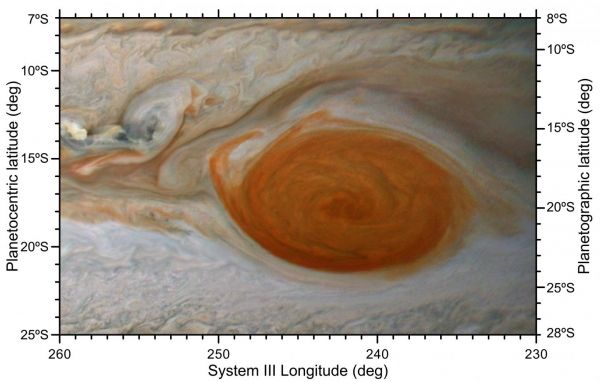The stormy, centuries-old maelstrom of Jupiter’s Great Red Spot was shaken but not destroyed by a series of anticyclones that crashed into it over the past few years.
The smaller storms cause chunks of red clouds to flake off, shrinking the larger storm in the process. But the new study found that these disruptions are “superficial.” They are visible to us, but they are only skin deep on the Red Spot, not affecting its full depth.
The new study was published in the Journal of Geophysical Research: Planets, AGU’s journal for research on the formation and evolution of the planets, moons and objects of our solar system and beyond.
“The intense vorticity of the [Great Red Spot], together with its larger size and depth compared to the interacting vortices, guarantees its long lifetime,” said Agustín Sánchez-Lavega, a professor of applied physics at the Basque Country University in Bilbao, Spain, and lead author of the new paper. As the larger storm absorbs these smaller storms, it “gains energy at the expense of their rotation energy.”
Read more at: American Geophysical Union
A flake of red peels away from Jupiter's Great Red Spot during an encounter with a smaller anticyclone, as seen by the Juno spacecraft's high resolution JunoCam on 12 February 2019. Although the collisions appear violent, planetary scientists believe they are mostly surface effects, like the crust on a crème brûlée. (Photo Credit: AGU/Journal of Geophysical Research: Planets)


